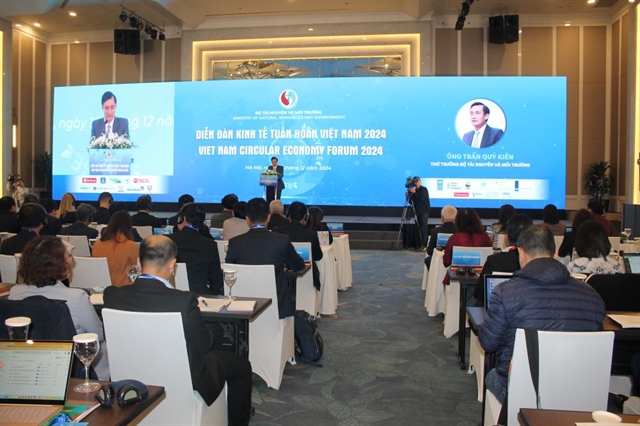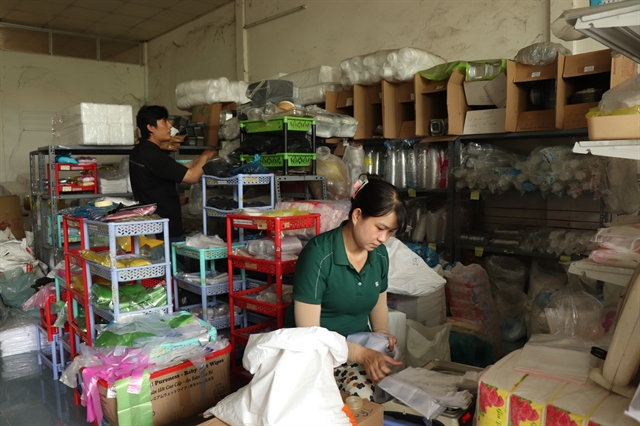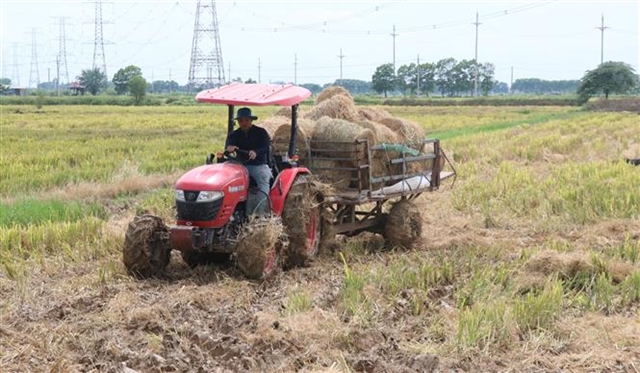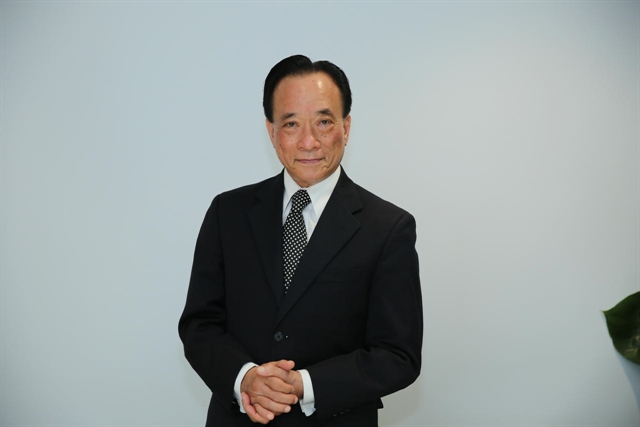 Society
Society

 |
| Straw is baled for re-use as material for growing mushrooms, a circular economy model helping reduce greenhouse gas emissions. — VNA/VNS Photo |
HÀ NỘI — Deputy Prime Minister Trần Hồng Hà has signed a decision issuing the national action plan for putting circular economy into practice until 2035.
The plan spans key sectors, including agro-forestry-fisheries, energy, mineral extraction and processing; manufacturing and processing, chemicals, construction, transport, services and tourism, waste management, urban areas and residential zones, industrial parks and clusters, and concentrated production, trade and service zones.
Central to this plan is the vision of establishing a sustainable production and consumption system that optimises the use of natural resources while reusing materials to their fullest potential. By minimising waste generation and reducing negative impacts on the environment, Việt Nam will promote robust circular economy models in production and trade
The plan also aims to drive innovation, enhance labour productivity, encourage green practices, foster a culture of sustainability, generate green jobs and develop new value chains within the circular economy.
Between now and 2030, Việt Nam is committed to reducing the extraction and use of non-renewable and water resources, while simultaneously enhancing the efficiency of resource, material and energy usage.
The plan aims to achieve land, water and mineral resource efficiency levels that rival those of ASEAN's leading countries. Biomass and solid waste-based power plants are expected to reach a capacity of 2,270MW, or 1.5 per cent of the country’s total power generation. Renewable energy is set to make up at least 47 per cent of the total primary energy, while national energy consumption is targeted to decrease by 8–10 per cent.
It aims for 95 per cent of solid household waste in urban areas and 80 per cent in rural areas to be collected and treated, with less than 50 per cent of this waste going directly to landfill.
By 2035, Việt Nam envisions an inclusive circular economy that blends innovation, high competitiveness, economic prosperity, environmental sustainability and social equity. The aim is to position the country as a leading hub for innovation within the ASEAN Economic Community (AEC), attracting investment and providing cutting-edge technologies, equipment, and services that support circular economy practices.
One of the key tasks and solutions outlined in the plan is to enhance awareness, knowledge, skills and best practices for the circular economy. Public communication campaigns and training courses at all educational levels will be promoted while an information-sharing platform will be launched to support the adoption of circular economy models. Furthermore, legal regulations and technical standards will be refined to facilitate the integration of these practices across various sectors.
The Ministry of Natural Resources and Environment was assigned to work with ministries, ministry-level agencies, and provincial authorities to issue policies and framework guidelines that will underpin the circular economy adoption. — VNS




